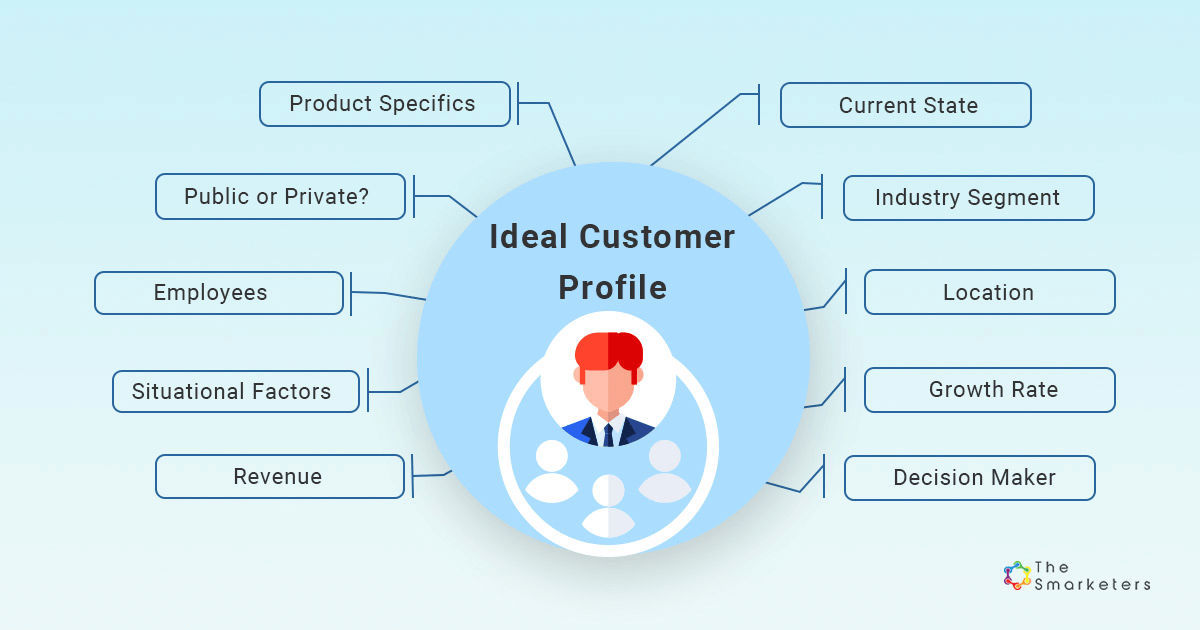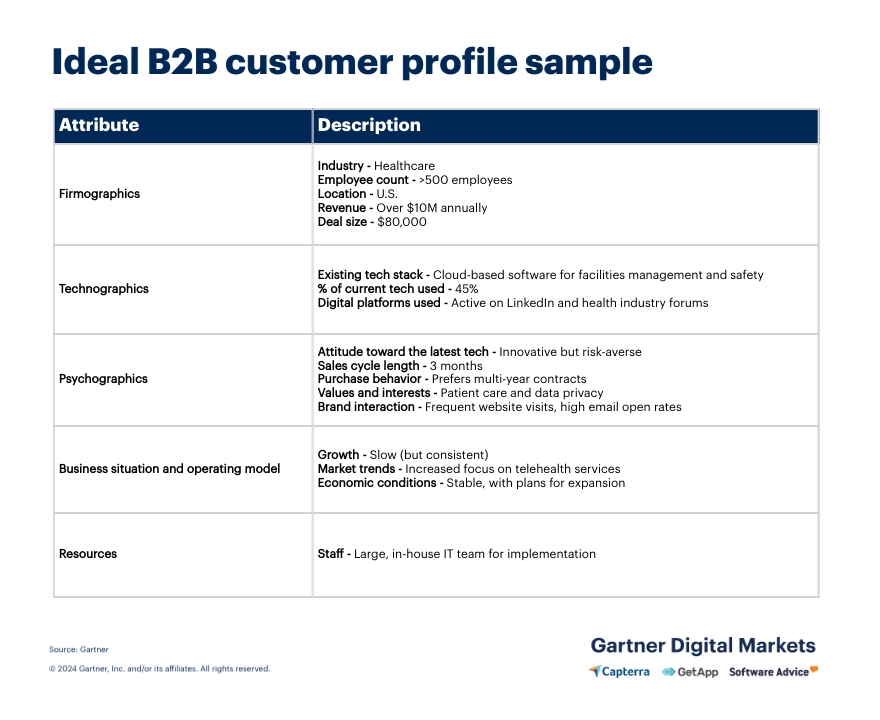What attributes are used for making an ICP?
When making an ICP, you're creating a detailed character for your business story. Each detail you choose adds insights into the needs of your target customer, their purchasing power, their goals, among others.
An ICP includes the following information:
-
Demographic information
-
Firmographic information
-
Technographic information
-
Psychographic information
-
Customer Lifetime Value (CLV)
-
Compatibility with your product or service
Now let’s look closer at what these different types of data actually mean…
Demographic data
-
Age: What’s the typical age of your customer base?
-
Gender: What gender is the buyer likely to be? (gender can also influence product preferences and needs)
-
Location: Where are your customers based?
Demographics can determine customer preferences and needs. That means that knowing them can help you decide the right strategies to ensure effective sales.
For instance, if your ICP states that your target market is in Sydney, you’ll likely work with an SEO agency in Sydney. You won't work with one in New York.
That’s because that SEO agency knows more about how Internet users in Sydney perform local searches. It can help better ensure the visibility of your content targeting Sydney users in SERPs.
Firmographic data
-
Industry: What sector do your business customers operate in?
-
Company size: Are your customers small startups or mid-sized and high-growth companies?
-
Annual revenue: How much do your customers (companies) earn from the sale of their services and products?
Understanding firmographic data helps you gauge a few important things. These include your ideal buyer’s spending power, priorities, challenges, and decision-making process.
This lets you craft the right sales and marketing messages and find out what products they need.
Technographic data
Knowing technographic data can help you determine openness to innovation and new solutions. It can also help you tailor your offerings to fit their current tech.
Psychographic data
-
Values: What are the core values that drive your customers? Sustainability, cost-efficiency, or perhaps innovation?
-
Pain points: What are the specific challenges or problems that the potential customer is looking to solve?
-
Priorities: What matters most to your customers? Is it family, work, or health?
-
Goals and objectives: What are the business goals and objectives that the potential customer aims to achieve?
-
Urgency and priority: How urgent are their needs for your solution? And what’s the priority given to solving those problems?
This information is hard to come by, but if you can put your hands on it, you will be able to dramatically improve your sales prospecting efforts and your sales collateral.
Customer Lifetime Value (CLV)
-
Revenue Potential: What is the estimated revenue that the potential customer can generate over their lifetime?
-
Retention Rate: What is the likelihood of the potential customer continuing to do business with your company over time?
-
Churn Rate: What is the rate at which the potential customer might stop doing business with your company?
Compatibility with your product or service
-
Fit with offerings: How well does the potential customer's needs align with your product or service offerings?
-
Sales cycle length: What is the typical duration of the sales cycle for customers with similar profiles?
-
Success stories: Are there historical success and case studies of similar customers who have benefited from your offerings?










